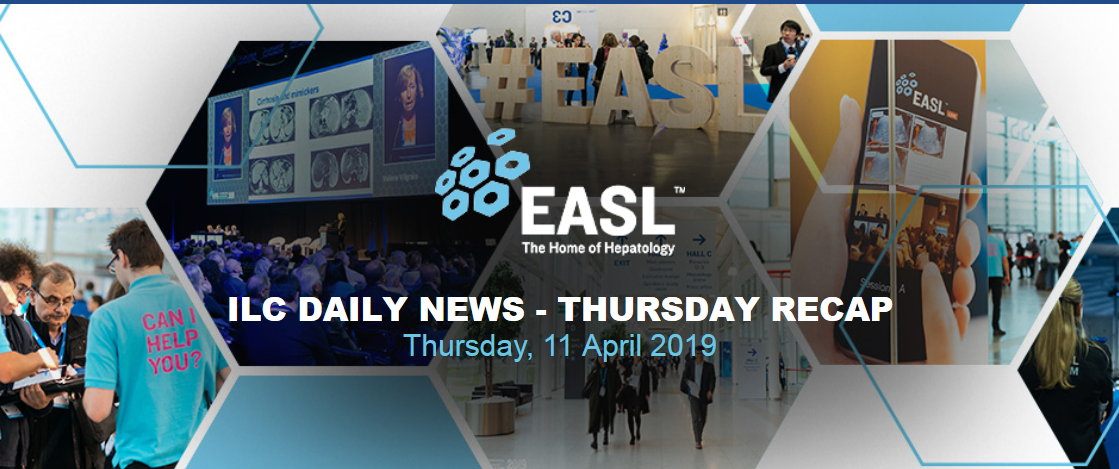
In this issue
Today, the ILC 2019 Daily News brings you highlights from the opening ceremony and plenary session and focuses on EASL’s pledge to tackle the big public health issues in liver disease – NAFLD, alcohol-related liver disease (ARLD) and the elimination of viral hepatitis.
In the opening address, Professors Tom Hemming Karlsen and Dominique Valla welcomed all delegates to ILC 2019. Professor Valla urged the audience to use this unique opportunity to ‘seek out knowledge that is missing in their everyday practice and understanding of liver disease and to have the curiosity to go beyond their individual fields, as there is much to be learned at the meeting points between different disciplines’. Professor Karlsen outlined some of EASL’s key commitments that will be represented at ILC in the coming days, including effecting change in public health policy, collaboration with sister societies, patient organisations and international partners, and continued excellence in clincial and scientific research to advance the treatment of liver disease.
Also in this issue – hear the buzz from around the congress centre in our ILC Insights from the Meet the Expert Sessions, Poster Tours, Parallel Sessions and yesterday’s Postgraduate Course!



There is a compelling need for drug treatments for NAFLD and NASH! In an interim analysis at 18 months, the pivotal Phase 3 REGENERATE study of obeticholic acid in patients with liver fibrosis due to NASH met its primary endpoint. It showed a statistically significant improvement in fibrosis improvement (≥1 stage) with no worsening of NASH. In addition, preliminary findings from a proof-of-concept study suggested that manipulation of gut permeability with type 2 chloride channel activator lubiprostone could be a potential strategy for the treatment of NAFLD.
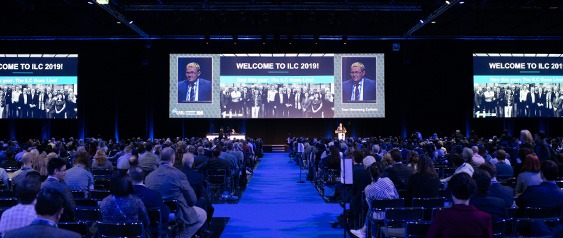
Simplicity is key in reaching WHO 2030 targets for HCV elimination! The pangenotypic, panfibrotic, single-tablet regimen sofosbuvir/velpatasvir offers a simplified therapeutic option to address this goal. Results from an international study, involving 5541 treatment-naïve and -experienced patients with HCV genotypes 1–6, demonstrated an SVR12/24 (ITT) of 92.7% following administration of SOF/VEL for 12 weeks.
Other promising preliminary clinical data were presented:
- Interim Phase 2 results – potent NOX1/4 inhibitor GKT831 shows rapid, dose and time-dependent reduction in markers of cholestatic injury in patients with primary biliary cholangitis that have had an inadequate response to ursodeoxycholic acid
- First ever randomised controlled clinical trial – addition of metal stents to angioplasty for Budd-Chiari syndrome significantly improved the patency of recanalized veins and lessened symptom recurrence without increasing the risk of complications
- First in human study – MHC-II invariant chain adjuvanted chimpanzee adenoviral and MVA hepatitis C vaccines elicit unprecedented levels of antiviral T-cell immune responses

Don’t miss

Tomorrow’s Jean-Pierre Benhamou clinical state-of-the-art: Shared mechanisms in cholestatic and fatty liver disease – implications for current and future treatment presented by Michael Trauner, MD from Medical University of Vienna, 10:30–11:00 in the main plenary

Breakfast morning rounds on hepatitis D virus, HCC therapy, immune-mediated hepatitis and hyperferritinaemia – Friday, 07:00–08:20, Strauss 3 and Lehar 2, 3 & 4

Critical reflection on landmark papers 2018 – Friday from 16:00–18:00 in the Hepatology Arena



Inspired by the 2017 UK Lancet Commission into Liver Disease, today’s 2019 EASL Public Health Session focused on the interventions urgently needed to tackle the epidemics of alcohol consumption and obesity driving liver disease-related mortality in Europe. Professor Roger Williams reviewed lessons learned from the Lancet Commission, Jürgen Rehm emphasised the need to consider interactions between alcohol, obesity and other causes of cirrhosis, Peter Rice described the barriers faced by NGOs seeking to influence EU policies, and Johanna Ralston suggested that it is time for a new narrative to change perceptions about obesity.
A number of key points were evident across all four presentations:
- Price-based policies such as sugar tax and minimum unit pricing on alcohol are effective measures
- Educational initiatives are needed to increase awareness of liver disease risk factors amongst the public and primary care physicians
- Legislation is needed to improve nutritional labelling on food and drink, especially health warnings on alcohol products
- Restrictions on marketing and advertising, particularly for children and adolescents, require political will and commitment

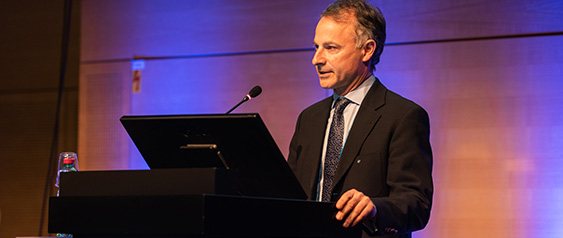

Viral hepatitis is the biggest cause of liver disease and related mortality in Africa. With its mandate to expand research and education beyond the borders of Europe, this year’s EASL International Liver Foundation (EILF) symposium, considered how the hepatology community can rise to meet the challenge of eliminating viral hepatitis in Africa.
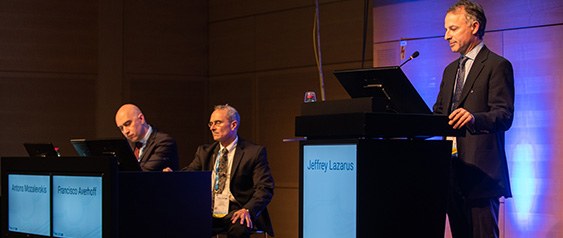
- There is an urgent need for simplified guidelines on testing and treatment strategies that are applicable to the African setting. Maud Lemoine outlined the remit of PROLIFICA, which aims to develop guidelines based on African cohort data, while Charles Gore discussed how the work of Unitaid is being applied in the hepatitis arena to increase access to quality-assured, affordable medicines.
- New molecular point-of-care diagnostics have great potential to reduce time from screening to diagnosis and treatment, although costs may limit their application in resource-limited settings.
- An expansive public health approach is also needed – integrating hepatitis services within broader health systems and strategic support from international agencies such as the WHO and the US Centers for Disease Control and Prevention (CDC) are central for viral hepatitis elimination programmes.
- Shevanthi Nayagam discussed how epidemiological models can help guide us to set realistic targets. Citing China as an incredible success story in tackling HBV infection, she commented that interrupting mother-to-child transmission alongside broad application of the infant vaccine is critical if we are to reach HBV elimination targets.
- Above all, cost-effective strategies are required! Robert Hecht outlined how the costs of scaling up treatment are offset by the potential for huge reward but suggested that ‘we need more political momentum and to create more of a movement behind viral hepatitis in Africa’.

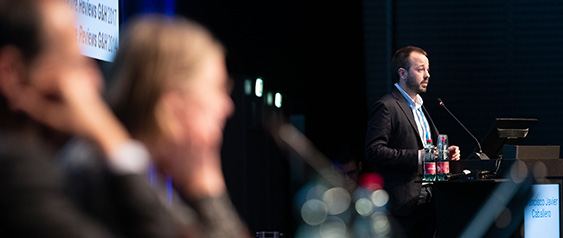
Cutting-edge research on show
Exciting new basic research and clinical trial data featured in today’s parallel sessions on NAFLD/NASH, viral hepatitis and autoimmune and cholestatic disease.
Early identification and effective management of NAFLD/NASH needed
Several studies from Europe and the USA reported on the link between worsening fibrosis in patients with NAFLD/NASH and spiralling healthcare resource utilisation and medical and societal costs. Patients with advanced liver disease have a high mortality risk that increases as they progress from compensated to decompensated cirrhosis and hepatocellular carcinoma. Tools and strategies to inform patients, increase earlier diagnosis and aid physician decision making could help mitigate the short- and long-term burden of this debilitating condition.
Is HCV elimination by 2030 within reach?
In the era of highly effective, well-tolerated DAAs, the elimination of HCV as a public health threat by 2030 is a realistic and feasible goal but it requires strategic approaches to investment, screening and diagnosis, timely treatment and linkage to care, and prevention of reinfection. Targeting vulnerable populations (e.g. PWID, homeless people), establishing clinics in low-threshold settings such as needle and syringe programmes, and developing protocols to reduce time from testing to treatment are viable real-world approaches that encourage screening and engagement with care and increase HCV treatment uptake.
From bench to bedside: advances in cholestatic disease
- Proteomic analysis in primary biliary cholangitis (PBC) showed significant differences versus healthy controls, that disease is modified by ursodeoxycholic acid, and predicts a nonresponder senescence-associated secretory phenotype.
- Serological markers of extracellular matrix modelling, including collagen type III, show promise as tools to identify patients with primary sclerosing cholangitis (PSC) at risk of disease progression and mortality.
- Evidence of spatial clustering in PBC, PSC and autoimmune hepatitis suggests a need to explore possible environmental risk factors in areas with high disease prevalence.
The road to HCV elimination: Launching EILF Centres of Excellence in Viral Hepatitis
The EASL International Liver Foundation (EILF) Centre of Excellence programme seeks to identify government institutions or partners that provide exemplary leadership and action towards the national elimination of viral hepatitis. Setting the stage for this new initiative, Dr Jeffrey Lazarus introduced Georgia as the first EILF Centre of Excellence.
In 2015, Georgia launched the first national HCV elimination programme, aiming to reduce prevalence by 90% by 2020. To be designated a Centre of Excellence, their viral elimination programme had to meet stringent criteria based on EILF’s four pillars of excellence in research, education, awareness and interventions.
With active involvement from public and private organisations, Georgia has risen to the challenge: more than 800 sites provide free HCV screening across the country and key strategies such as microelimination among PWID have been implemented as a means of achieving national elimination. Georgia’s Minister of Health, Dr David Sergeenko summarised the country’s achievements: ~1.4 million screened, 41% treatment coverage and a cure rate of 98.2% in just four years.

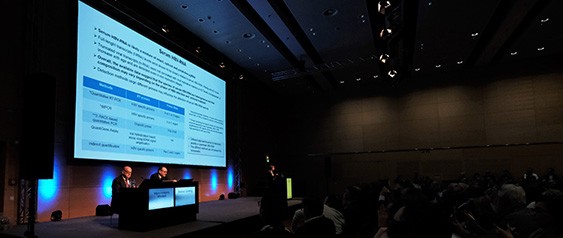
EASL champions global collaboration
Partnership is critical to HCV elimination! A joint symposium with the US CDC explored opportunities in HCV elimination, showcasing regional models of care in countries such as Georgia and Egypt, which have drastically reduced HCV prevalence in recent years. Strategies included extensive partnership between government, academia, the pharmaceutical industry, societies and NGOs to pool expertise, as well as task shifting to non-specialists, novel approaches to funding and simplification, and decentralization of diagnostics – all with the aim of extending access to screening and treatment particularly in the hardest-to-reach populations.
It was standing room only at the EASL and European Society of Clinical Microbiology and Infectious Diseases (ESCMID) joint symposium, which reviewed the latest diagnostics and monitoring of HBV and HEV and new tests to enhance linkage to care and facilitating the elimination of HCV. Professor Mario Mondelli, representing ESCMID, hailed this opportunity to bring the societies together for a common goal!
Look out for more collaborative symposia over the next few days!
- EASL-EILF, EASL-ECDC and EASL-WHO symposia on elimination of viral hepatitis and promoting access to DAAs
- EASL-ESMO symposium on implementing a multidisciplinary approach to disease management in cholangiocarcinoma
- A symposium co-organised with EASD, ESPCG, and EASO on multidisciplinary approaches to the management of NAFLD
- The EASL-APASL Symposium on recognising and managing the lean NAFLD patient
ILC Insights




Hear what ILC 2019 attendees are saying about Meet the Experts sessions
Click here to see the Poster Tours in action
One of the speakers at the autoimmune and cholestatic liver disease session reflects on the key points
Look back on some reflections from yesterday’s Postgraduate Course
Highlights of the day

As the congress officially opens, look back on the highlights of the day at ILC 2019

Acknowledgements
‘ILC Daily News’ was supported by grants from: Bayer, Boehringer Ingelheim and Eisai
